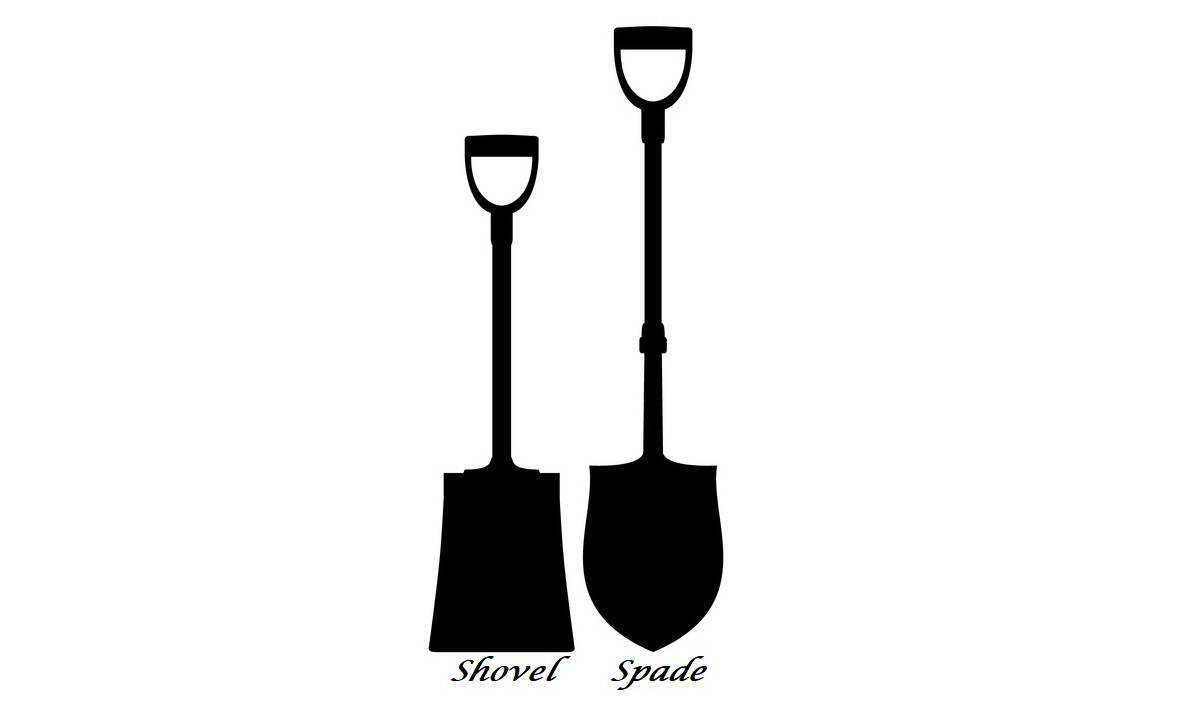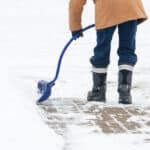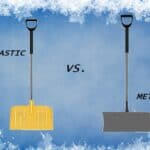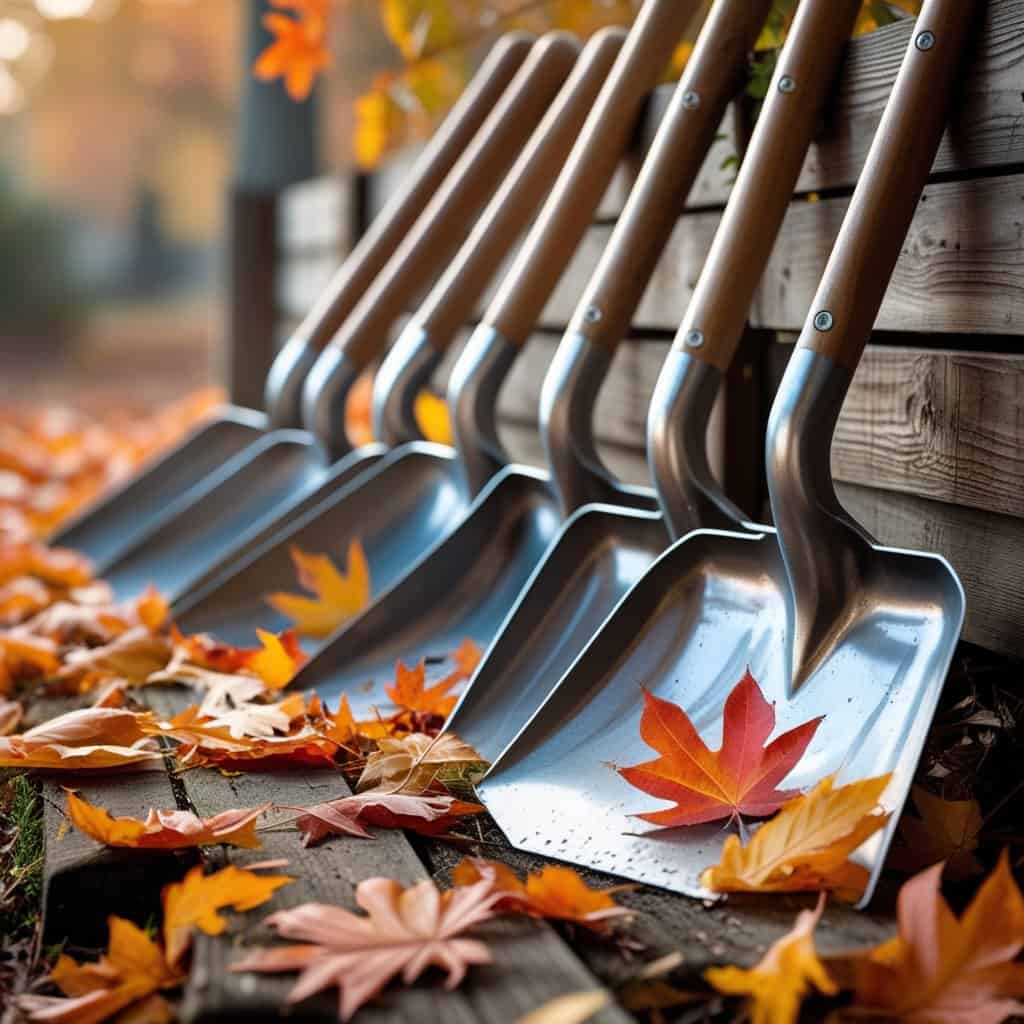The term “shovel” is an all-encompassing descriptor for anything with a flat, metal digging tool.
Much like screwdrivers, a Phillips head screwdriver is a screwdriver, the same as a flat head screwdriver but how you utilize each is different.
Contrary to popular belief, shovels are not really for digging, while spades are.
Spades are what you use for digging down into the earth, while flat shovels are for scooping, bailing hay, or digging into horizontal surfaces.
The difference is, a spade truly is a spade and is not technically a shovel at all.
Over the years, it’s been lumped into the “shovel” category and has remained that way ever since.
The fact is, both a shovel and a spade have very different uses.
Now that you know that a spade is not a shovel, what kind of shovels are actually shovels, and what spades are spades?
There’s a pretty extensive list, but we’ll focus on the primary ones.
Table of Contents
What Kinds Of Shovels Are There?
1. Flat Shovel
Flat shovels don’t have a point, and they’re designed primarily for scooping.
Nevertheless, they make excellent gardening tools for when you need to shift materials around or scoop gravel into a wheelbarrow.
A flat shovel is a perfect tool for the task if you need to engage in shallow digging, shallow trenching, digging in loose topsoil, or scooping gravel.
It’s also suitable for edging around concrete surfaces such as a sidewalk or driveway.
2. Post-Hole Shovel
Post-hole diggers do just what their name implies.
They dig holes straight down so you can plant 4×4 posts in the holes.
They are designed with two narrow-bladed shovels with blades that have a slight, inward curve.
The two shovels connect together by a hinge-spring that allows you to open and close them.
The spring will enable you to open the blades when you dig down into the earth and close them together when you pull the dirt up and out of the hole.
3. Root Shovel
Now, this is genuinely a strange-looking shovel, but its design indicates what it does, and what it does is seriously wreck some roots.
The sawtooth edges and the sharp, concave point dig while cutting any roots unfortunate enough to be in the way.
If you want to clear a good-sized, squared-off area for gardening and, there are a ton of old, established roots in the way, this murderous-looking shovel is your go-to tool to get the job done.
4. Snow Shovel
The snow shovel is the flat shovel on steroids, with a wide, scooping rim and a deep pocket for holding big mounds of snow.
However, it serves the function of a flat shovel in a much larger context.
Snow shovels also tend to have a short shaft and a handle that’s flipped around into a T-grip.
But, again, the basic premise is that each scoop will be pretty heavy, and the difference in grip will give you more leverage.
What Kinds Of Spades Are There?
Like there are multiple variations on the shovel, there are numerous variations of spade, digging tools.
1. Garden Spade
A garden spade is your most basic spade, used primarily for potting your plants and digging out areas to start your new garden.
They have a reverse T-grip for handling heavy loads of soil for when you need to get that old useless soil out of your prospective garden and replace it with good compost and mineral-rich topsoil.
These spades typically have a shorter handle.
2. Border Spade
The border spade isn’t as bulky as the garden spade because it’s the tool you use when digging in confined areas, such as under the house or in the far corner of the garden.
In addition, its size is smaller by design so that you can use it for precision work, so this spade is more streamlined than its larger, bulkier cousin.
A border spade is a perfect spade for planting smaller plants and shrubs or when you need to dig deeper narrow holes for a single, gallon-size plant.
3. Transplanting Spade
Known as a leverage spade, it has a long, narrow blade designed to bite deep into the soil and allow you to leverage out those tricky, finger-sized roots.
In addition, it typically has a long sharp blade with a T-grip handle to give you that extra leverage power when you need it.
4. Garden Trowel
A garden trowel has all of the best aspects of the spade digging tool, except that it is a mini version of the spade.
The garden trowel is made for your lightweight gardening projects and for dealing with any areas that are just too tight for you to get a regular spade in.
Generally, you can use them with just one hand, but you can also find some with a slightly longer handle with very long blades that may require the use of both hands.
Which Is Better, The Shovel Or The Spade?
Ultimately, shovels and spades are best for exactly what they are designed to do.
For instance, if you’re digging a massive hole into the ground, you want a spade, not a shovel.
On the other hand, if you’re trying to scrape clear a section of a yard as you’re prepping it to pave a driveway over, you want a shovel.
Each type of shovel and spade each have their purpose as well.
When you use each one as it was designed, you’ll get the most out of it.
To help you in purchasing a shovel or spade, check out our guide Choosing The Best Shovel For You.
All Things Considered
Shovels and spades are excellent tools.
However, they are certainly not the same thing.
It’s easy to see how anyone would think that a spade is a shovel, as most people call spades by that term and always have.
After all, a spade has a blade and a handle therefore it looks like a shovel so it must be one.
Even though they are two different things, they’re both designed for some serious digging in one form or another, and if you have an upcoming DIY project, all you need to know is what your goal is and the best tool to help you reach it, a shovel or a spade.






